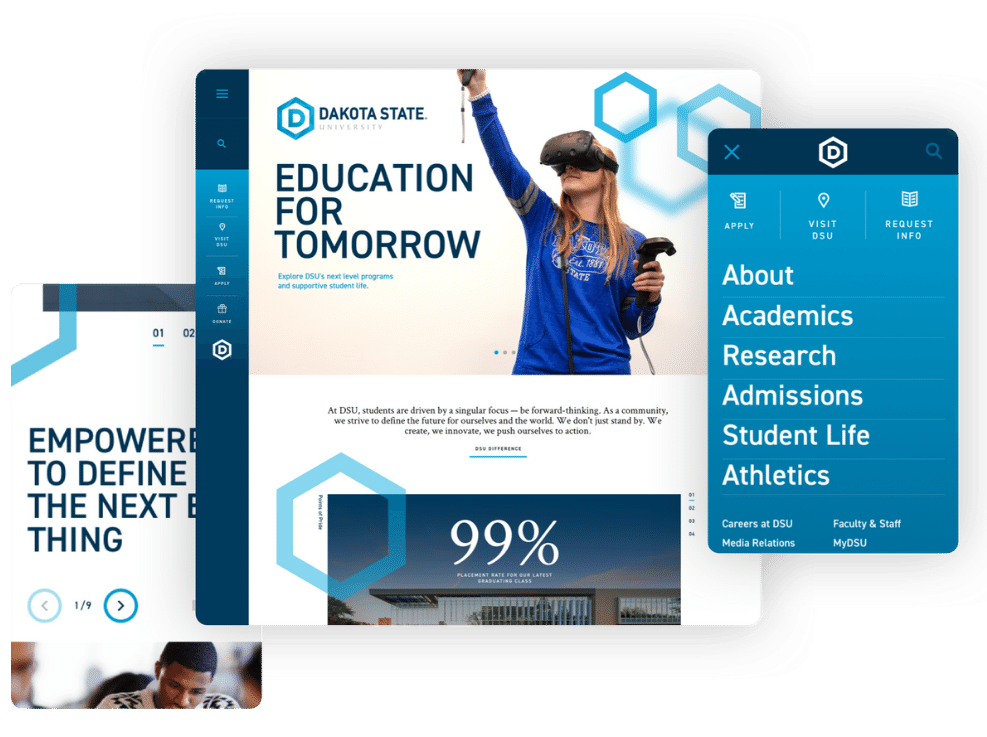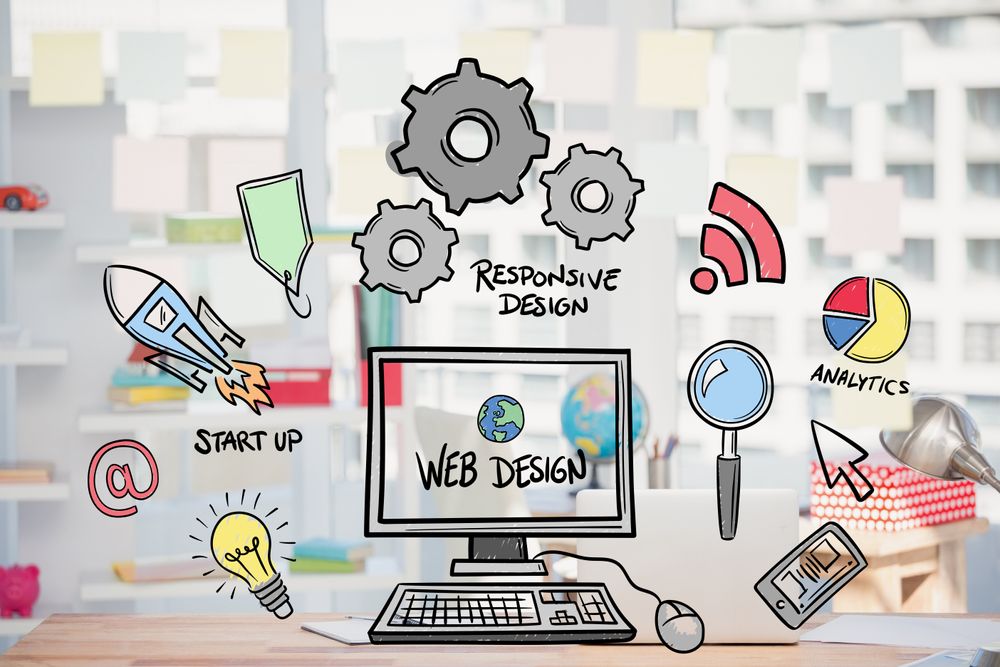Exploring the Latest Innovations in Website Design for Enhanced Functionality
Exploring the Latest Innovations in Website Design for Enhanced Functionality
Blog Article
Modern Internet Site Design That Catches Focus and Transforms
In a significantly electronic landscape, modern-day web site layout has actually emerged as a crucial aspect in catching individual interest and driving conversions. As we check out these crucial parts, it comes to be clear that recognizing their interplay can considerably impact a web site's performance and user fulfillment.
Significance of Visual Hierarchy
Aesthetic pecking order is an essential element in web site layout, as it overviews users' focus and enhances their overall experience. By purposefully organizing content, designers can route customers to the most crucial details first, thereby boosting engagement and improving use. Reliable aesthetic hierarchy uses numerous strategies, including size, color, comparison, and spacing. Bigger elements naturally attract the eye, while contrasting shades can highlight vital messages, making them attract attention among even more restrained parts.
Including a rational circulation in content setup is necessary; for instance, positioning the most essential details at the top of a page cultivates prompt acknowledgment. Furthermore, constant use typography, such as varying font sizes and styles, helps develop a clear material structure. This organization not just help in navigation yet likewise develops trust, as individuals feel more comfortable when they can conveniently discover what they are looking for.
Ultimately, a well-executed visual power structure not just enhances aesthetic appeal but likewise dramatically influences user behavior. By prioritizing vital aspects and ensuring a smooth experience, developers can effectively convert visitors right into customers, reinforcing the value of this fundamental layout concept in contemporary internet site development.
Responsive Style for All Instruments
Creating a seamless experience across different gadgets is essential in today's digital landscape, where customers gain access to web sites from tablets, mobile phones, and desktop computers alike. Receptive design is a critical approach that guarantees web sites adjust fluidly to different display orientations, resolutions, and dimensions. By utilizing flexible grids, images, and CSS media queries, developers can create designs that preserve visual integrity and capability, no matter the tool being made use of.
The value of responsive layout expands beyond aesthetics; it straight affects customer involvement and conversion prices. An internet site that operates well on all devices urges longer brows through and reduces bounce prices, as individuals are extra most likely to communicate with web content that is easy to browse. In addition, search engines, particularly Google, prioritize mobile-friendly websites in their rankings, making responsive layout a crucial component of search engine optimization (SEO)
Incorporating responsive style not only enhances individual experience yet additionally streamlines the development process. By producing a single site that works across devices, organizations can save time and resources compared to developing different mobile and desktop computer versions. Eventually, responsive layout is an essential approach for modern-day website layout, making certain accessibility and satisfaction for all individuals, regardless of their tool.
Involving Interactive Components
While a responsive layout prepares for a practical web site, including engaging interactive aspects is vital for capturing customer focus and promoting deeper links. Website Design. Interactive elements, Full Report such as computer animations, tests, and clickable infographics, produce a much more dynamic user experience, encouraging visitors to invest even more time on the website
Including interactive attributes can likewise assist customers through facility info, making it much easier to absorb material. Interactive sliders can highlight item variants, while embedded video clips can supply demos or reviews that reverberate more than static pictures or text. Furthermore, gamification methods, like incentives for involving or completing jobs with content, can boost individual inspiration and retention.
Effective use of interactive aspects not only enhances the individual experience but can likewise lead to higher conversion rates. It is necessary to balance interactivity with efficiency; overly complex features may hinder site speed, negatively impacting individual satisfaction.
Structured Navigating Practices
Reliable navigation is a foundation of any kind of successful web site, as it straight influences individual experience and web content availability. Streamlined navigating practices ensure that individuals can conveniently find information, boosting their interaction with the website. A well-structured navigating menu need to be straightforward and user-friendly, usually including a restricted number of primary groups to prevent frustrating site visitors.
To attain structured navigating, developers must prioritize a hierarchical structure that realistically organizes material. Applying breadcrumb trails can supply customers with context about their existing place within the website, allowing for smooth backtracking. Furthermore, using drop-down food selections can successfully conserve room while still offering accessibility to subcategories.
Responsive layout is vital, as navigation needs to be useful across all tools (Website Design). Mobile individuals, other particularly, advantage from touch-friendly food selections and collapsible areas that maintain use without jeopardizing aesthetic appeals

Efficient Call-to-Action Techniques
A well-crafted call-to-action (CTA) is vital for guiding customers towards wanted results on a site, as it encourages them to involve with web content or purchase. To optimize their efficiency, CTAs must be clear, compelling, and strategically positioned throughout the website.
First, utilize action-oriented language that interacts urgency or worth, such as "Get going," "Join Currently," or "Insurance claim Your Discount rate." This language not only encourages users yet additionally establishes clear expectations concerning the following actions.
2nd, think about style aspects; CTAs should stand apart aesthetically with contrasting shades, enough whitespace, and prominent positioning. A button that is simple to see and click rises the probability of user interaction.
Additionally, get redirected here personalizing CTAs based on individual actions or demographics can dramatically enhance interaction. Customized messages reverberate more with individuals, driving greater conversion rates.

Verdict
These components jointly boost user experience, ensuring that site visitors remain engaged and encouraged to check out material additionally. By prioritizing these style concepts, services can significantly boost individual retention and conversion prices, eventually leading to higher success in the electronic landscape.
In an increasingly electronic landscape, contemporary site layout has actually arised as a pivotal factor in recording customer attention and driving conversions.Visual pecking order is a crucial element in web site style, as it guides customers' focus and improves their total experience.The significance of responsive design extends past appearances; it directly influences user involvement and conversion prices.Including responsive design not only boosts individual experience but likewise streamlines the growth process. Inevitably, responsive style is a fundamental strategy for modern site layout, guaranteeing accessibility and contentment for all individuals, no matter of their gadget.
Report this page